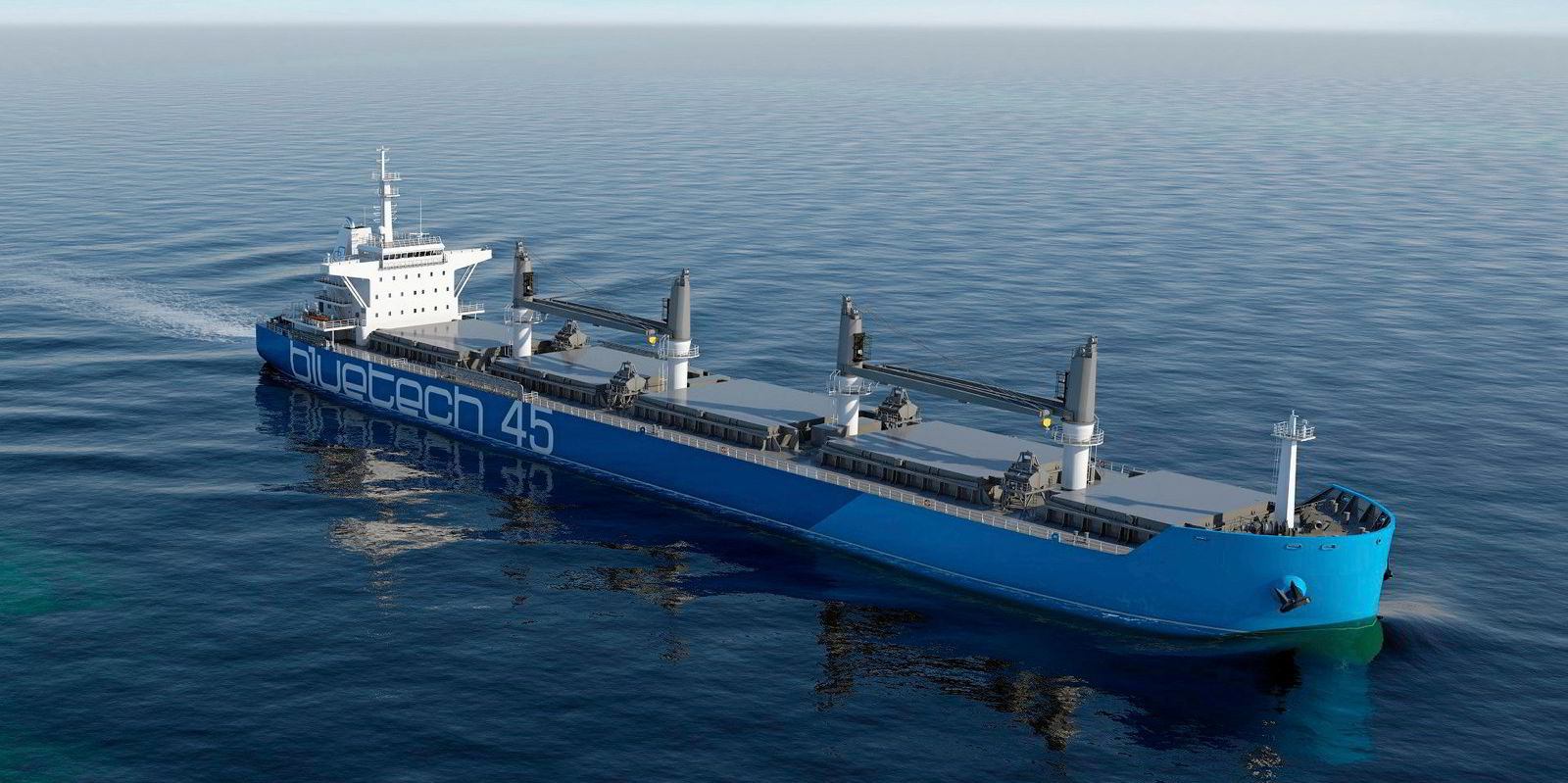A new study is backing green ammonia and methanol as the best way to decarbonise a typical bulker through to 2050.
And Jonas Korpela, a project engineer at vessel designer Bluetech in Helsinki, Finland, is ruling out hydrogen as a viable fuel.
The engineer has been looking at the emissions-reduction science over the lifetime of a Bluetech 45 handymax bulker from 2027 to 2052.
His master’s thesis at Aalto University examines the potential effect of decarbonisation on aspects such as general vessel arrangement, cargo capacity and deadweight, and implementation costs.
The study includes a comparative analysis of different fuel options from a well-to-wake and tank-to-wake perspective, including synthetic, biofuels and blue fuels using both a combustion engine and fuel cells.
Korpela’s research identifies combustion engines burning ammonia or e-methanol as the most effective options.
Fossil-based ammonia is the most financially viable alternative until synthetic fuel production becomes more widespread, Korpela found.
The best way to estimate the future of shipping is to look at the current and forthcoming rules and regulations, he told TradeWinds.
“From those, it can be seen that traditional fuels that are produced from fossil feedstock will not be a way to go for very long anymore,” he said.
The engineer said future alternative fuel production costs in the study are averages taken from estimates from several significant stakeholders in the industry.
Costs high until 2040

In general, e-fuels will be the most expensive solution until roughly 2040, but their potential in terms of future production volumes and cost, in addition to environmental friendliness, are excellent, Korpela believes.
“The main thing holding them back is the lack of renewable energy,” he told TradeWinds. “Feedstock for biofuels is expected to be lacking and high demand for other industrial sectors is also expected.
“This can make availability an issue that limits their use in shipping. Carbon capture, storage and reuse need to be working before blue fuels can be widespread.”
The engineer said e-methanol is predicted to be more expensive than e-ammonia, but methanol itself has good properties for use in deepsea shipping.
“For an alternative fuel, it has a good volumetric density, which is highly important in deepsea shipping where long operational range is needed,” Korpela said.
Hydrogen’s poor density
He argues that ammonia’s density is not as good compared to methanol but still suitable for maintaining the operational range at an adequate level.
“All types of hydrogen were out of the question due to the very poor volumetric density,” the engineer said. “Also hydrogen tanks are very expensive.”
The study forecasts biofuel costs are expected to remain stagnant up to 2052.
“One thing that needs to be considered is the Russian war and the consequent energy crisis,” Korpela said. “The EU is now putting more effort into e-hydrogen production, which can further develop the production methods, increase the production volumes and thus make all e-fuels much cheaper than considered before the war.”
Data in the study comes from before the invasion.
Korpela said the conflict provides a good example of sudden global events that may cause deviation from expected progress one way or another.
“Ammonia, methanol and LNG ships are the way to go for the future in deepsea shipping,” Korpela said. “I would say that none of those would be a bad choice.”




